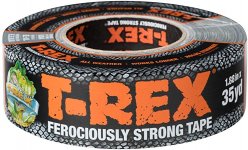Owassokie
Sr. Member
- Jun 28, 2012
- 497
- 422
- Detector(s) used
- Equinox 800, Ace 250
- Primary Interest:
- All Treasure Hunting
This thread has played out a hundred times on here. It's always the same thing. People with experience conclude item is natural. New guy "doesn't know for sure" but wants to "learn" and believes experienced rock hounds are just close minded.
The fact is your piece doesn't appear to be worked according to some very knowledgeable people. "Perfectly tapered" holes can happen naturally. If we can't conclude that it's been worked then we can't conclude it's a tool. Now, you can think it's a tool. You can conclude on your own it's a tool. You can have lots of discussions and come up with new theories. You can lash it it a handle. You can research it every direction. But until you prove it's been worked, most people will conclude it is natural.
The fact is your piece doesn't appear to be worked according to some very knowledgeable people. "Perfectly tapered" holes can happen naturally. If we can't conclude that it's been worked then we can't conclude it's a tool. Now, you can think it's a tool. You can conclude on your own it's a tool. You can have lots of discussions and come up with new theories. You can lash it it a handle. You can research it every direction. But until you prove it's been worked, most people will conclude it is natural.








